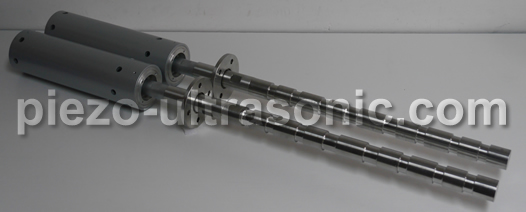|
|
|
|
|
|
Ultrasonic Sonochemistry in Chemical Reaction |
|
|
05 Mar, 2016 |
Ultrasonic Processor |
|
|
|

Ultrasonic sonochemistry is the unusual chemical effects of intense sound waves traveling through a liquid. The study of sonochemistry started in 1927. However, a renaissance took place until 80s, the cheap and reliable generators with high-intensity ultrasound make it possible to find various industrial applications. The sonochemical effects and all their applications are based on a phenomenon known as acoustic cavitation which can greatly ennhance the chemical activity in the solution. As a physical tool, ultrasound technique can create extreme conditions in chemical process, not only speed up chemical effects, but also change the direction of some chemical reactions to produce many unexpected results.
Principle of sonochemistry
In chemistry, acoustic cavitation refers to the formation, growth, and implosion of tiny bubbles. Cavitation bubbles consist of cycles of compression and expansion. Compression cycles cause the positive pressure in the liquid to push the molecules together. On the contrary, expansion cycles cause the negative pressure to pull the molecules away from one another. Once a bubble grows very rapidly, until unable to absorb energy from sound waves. In this case, the liquid will rush in and the bubble implodes. The whole process destroys the attractive forces of molecules in the liquid phase.
The implosion of cavitation bubbles is rapid, these tiny bubbles formed during sonication raise the temperature of the liquid immediately surrounding the cavity and creates a local hot spot. However, the region is so small that the heat dissipates very fast. On the other hand, very high pressures i.e. around 1000 atmospheres are generated during the collapse of bubbles. The sonication creates extreme physical and chemical conditions in cold liquids although the extremeconditions are very localized.
Types of sonochemical reactions
The sonochemical reactions can be broadly divided into homogeneous liquid, heterogeneous liquid-liquid and heterogeneous solid-liquid.
In homogeneous liquid-phase reactions such as water, the bulk liquid immediately surrounding the collapsing bubble generates shear forces which can produce mechanical effects. On the other hand, the bubble itself will be subjected to extreme conditions of temperature and pressure on implosion leading to chemical events.
Unlike in the liquid-only systems, cavitation occurs in a liquid near an extended solid surface is unsymmetrical because the surface provides resistance to liquid flow from that side. This generates a powerful liquid jet at the surface. Chemical reaction is further facilitated by high temperature and pressure associated with bubble implosion near surface. These processes all enhance the chemical reactivity of solid surfaces and increase mass and heat transfer to the surface by disruption of the interfacial boundary layers.
Acoustic cavitation in heterogeneous powder-liquid reactions can produce dramatic effects on powders suspended in a liquid. Trapped gas or surface imperfection will act as the nuclei for cavitation bubble formation on the surface of a particle, and further lead to shock waves which break the particle apart. Surface imperfections or trapped gas can act as the nuclei for cavitation bubble formation on the surface of a particle and subsequent surface collapse can then lead to shock waves which break the particle apart. Cavitation bubble collapse in the liquid phase near to a particle produce high velocity interparticle collisions which can lead to erosion, change the surface morphology and reduce the particle size.
In heterogeneous liquid-liquid reactions, cavitational collapse at or near the interface of two immiscible liquids will greatly increasing their surface contact, ultrasonic compression and expansion stress liquid surfaces and cause disruption and mixing effect. Microscopic droplets of one liquid are suspended in the other, eventually very fine emulsion is formed. The effects of ultrasound on immiscible liquids are broadly used to make chemical reactions proceed quickly.
Applications of sonochemistry
Ultrasonic laboratory and industrial homogenizers are applied in a wide range of sonochemistry. High-intensity ultrasonic probes used for biological cell disruption are reliable and effective for sonochemical research. Ultrasound has been successfully used to process of various organic and inorganic materials in a wide range of volumes (50ml to 2000ml) in a laboratory environment. Power ultrasound help to prepare samples for biological or chemical analysis, and accelerate the rate of chemical reactions and processes.
At industrial levels, sonochemistry can be used for batch or continuous production such as extraction, synthesis and degradation, biodiesel production, microbial treatment, dispersion and agglomeration, etc. Generally processing volumes can range from 2 liter to 2000L per batch, greatly improve reaction outcome including higher yield and better quality. In addition, sonication is the only way to realize some chemical changes such as nano-sized tin-coating of titanium or aluminum. Hanzhou Ultrasonic provides the full range of ultrasonicators from lab processors upto industrial reactors for large-scale industrial production. Today, as a eco-friendly and eco-efficient method, sonochemistry has huge potential for innovation in green chemistry.
|
|
|
« Back |
|
↑ Top |
|
|
|
|
 Downloads
Downloads Sitemap
Sitemap Downloads
Downloads Sitemap
Sitemap